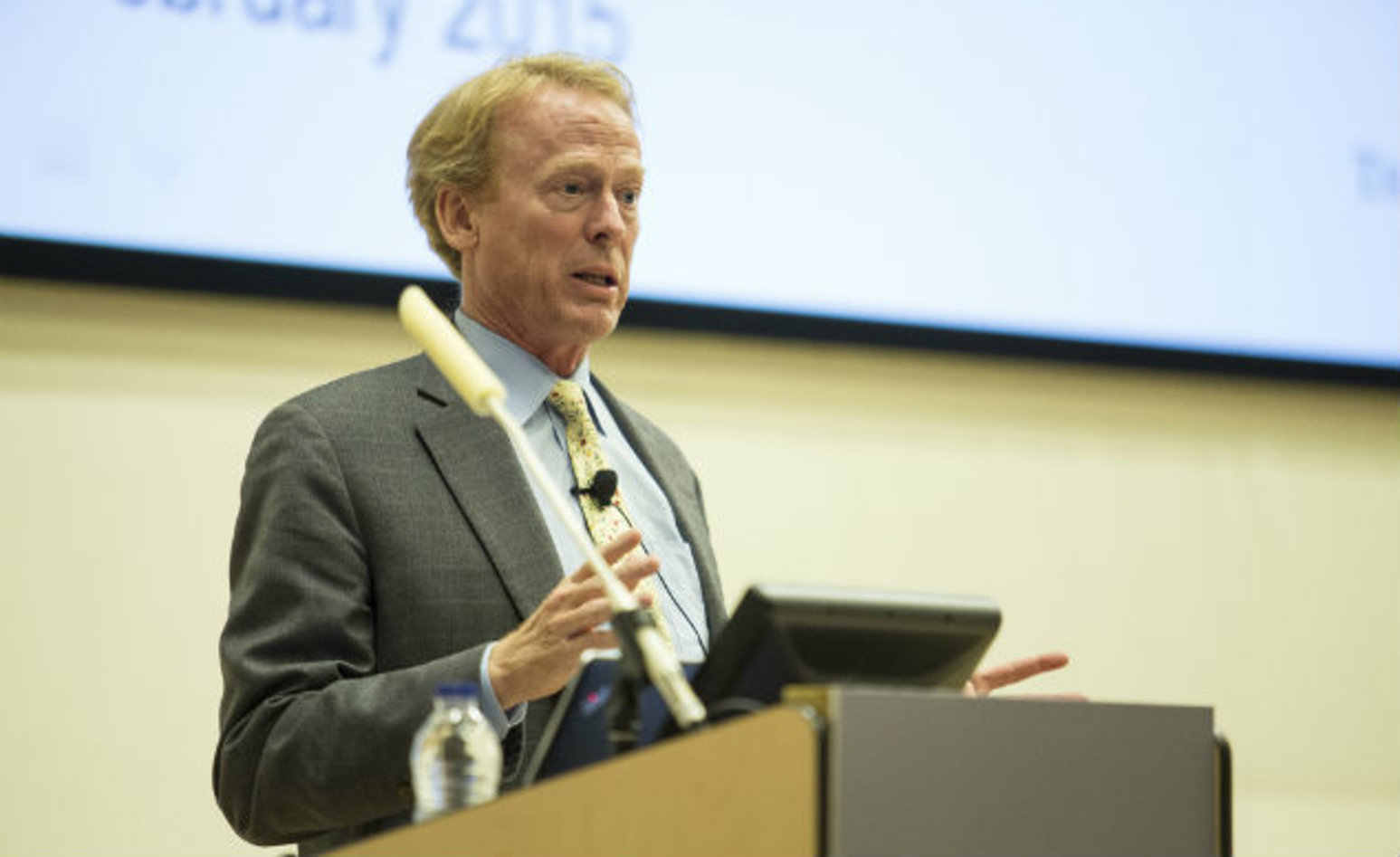For Richard Lawrence Jr., the key to investing success is to keep it simple.
Lawrence, Chairman and Executive Director, Overlook Investments Group, attributes his impressive investing track record to his personalized investment model, which is characterized by having only one fund and one asset class and a focused portfolio of 20-22 holdings. The independent fund management company invests only in public equity markets throughout Asia through The Overlook Partners Fund LP.
Lawrence spoke with students in Ivey Professor George Athanassakos’ value investing class on February 26 about his investment model and the principles behind it.
Related to this story
The Overlook model is a mixture of investment and business philosophies and principles. Overlook’s analysts look for bargain valuations and buy when a company’s stock prices are down, an approach that Lawrence calls “contrarian,” rather than typical.
“It should feel uncomfortable – maybe even give you a stomach ache. That’s when you know you are buying a good stock. If it feels too comfortable, be careful,” he said.
In fact, Overlook often buys during bear markets, a period when the prices of securities are falling, and most investors are selling.
“What you can buy in a bear market is so much better in terms of being able to generate an internal rate of return. You have to be a buyer in bear markets, but that is difficult, and remarkably few investors are able to pull it off,” he said. “It’s not that we can predict bear markets, but we can be prepared for them. If a bear market hits tomorrow, our stock has the muscle to get through and we have relationships and communications with our investors that will get the bulk of them through it as well.”
Overlook also has its own personalized method for evaluating risk that focuses on four elements:
- Pricing power (The extent to which a company may raise prices without reducing demand for its products);
- Cash flow (The movement of money into and out of a business);
- Sustainable earning per share (EPS) growth (The amount of a company's profit that can be allocated to one share of its stock); and
- Valuation (The process of calculating the fair market value of a stock).
Adhering to this formula for assessing risk creates a margin of safety (the difference between the intrinsic value of a stock and its market price) and de-emotionalizes the process of buying and selling stock, which can at times be highly emotional.
“You don’t have to have Warren Buffett’s IQ to do this. I’m just a regular guy,” said Lawrence. “My success comes from implementing these disciplines in a very consistent way.”
The model has a proven track record of success. Since the fund’s inception in 1991, Lawrence has been compounding capital at a rate of 14.67 per cent (time-weighted rates of return).
Lawrence said his personal model was inspired by a variety of insights and lessons from other value investors, including John Bush, Senior Officer at Fairfield, Bush & Co; Marc Faber, Director of Marc Faber Ltd. and publisher of the Gloom Boom & Doom Report newsletter; and Jeremy Grantham, Co-founder and Chief Investment Strategist of Grantham Mayo van Otterloo (GMO).
He encouraged the students to read investment books, connect with other investors, and learn as much as they can about value investing and then to take what they’ve learned and use it to form their own personal model.



